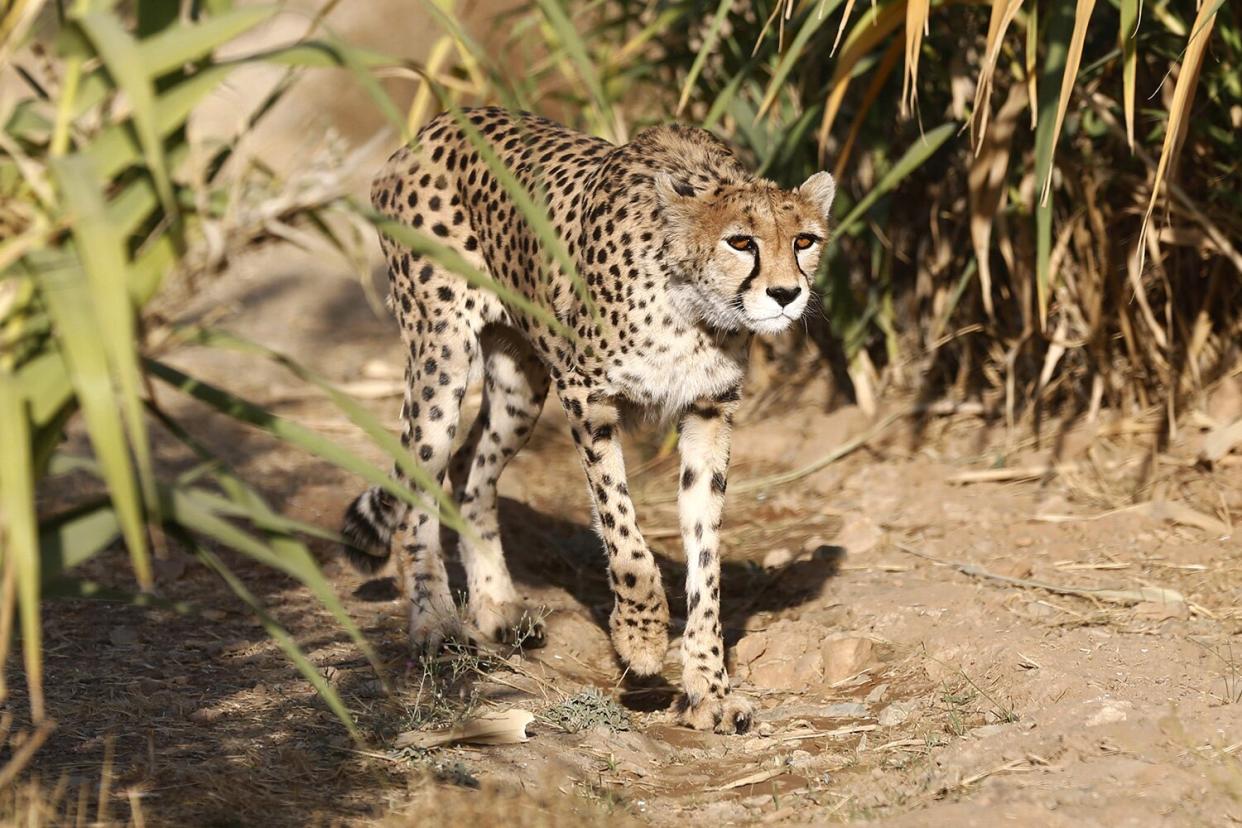Iran Official Says 12 Asiatic Cheetahs Remain in the Country: 'Situation Is Extremely Critical'

ATTA KENARE/AFP via Getty
The Asiatic cheetahs of Iran are disappearing.
According to AFP, officials estimate only 12 of the big cats are left roaming the country. The Asiatic cheetah is a subspecies of the spotted big cat with a smaller stature and thicker fur than African cheetahs, per the International Society of Endangered Cats. The animals once prowled through India, Pakistan, Russia, Iran, and the Middle East but now only remain in Iran after hunting, habitat loss, and lack of prey pushed the subspecies to the brink of extinction.
Now, the Asiatic cheetah's position in the world is shakier than ever, with only a dozen of the felines left in the wild.
"There are currently only nine males and three females against 100 in 2010, and their situation is extremely critical," Hassan Akbari, Iran's deputy environment minister, told Tasnim the news agency, per AFP.
"The measures we have taken to increase protection, reproduction, and the installation of road signs have not been enough to save this species," he added.
RELATED: U.S. Government Declares 23 Species Extinct, Including Ivory-Billed Woodpecker
Luke Hunter, the executive director of the Big Cats Program at the Wildlife Conservation Society in New York, told Newsweek that the Iranian Department of Environment provides "excellent protection" for Asiatic cheetahs in areas like Touran National Park, but "the real challenge is to provide the same level of robust protection over the massive landscapes that Iranian cheetahs require. Without that, the prospects for cheetahs in Iran are dire."
Currently, the cheetahs are threatened by the roads cutting through their habitat, undetonated mines left in the desert, and a lack of food and water, according to Morteza Pourmirzai, the CEO of the Iranian Cheetah Society.
"There are lots of roads in the habitats. In some particular areas, they are completely extinct because of the roads. And because they live in the desert, there are lots of mines as well as camels and other livestock. The livestock can sometimes attack cheetah cubs, and camels are in competition with the cheetah's for water and food," he told Newsweek.
RELATED: Coby, the 'Beloved' Dog Best Friend of the Columbus Zoo's Cheetahs, Dies After Decline in Health
The Iranian Cheetah Society is trying to protect the dozen remaining cheetahs by monitoring the population through camera traps.
The cheetah species as a whole is listed as "Vulnerable" by the International Union for Conservation of Nature, with an estimated 6,674 adult cheetahs left in the wild.

